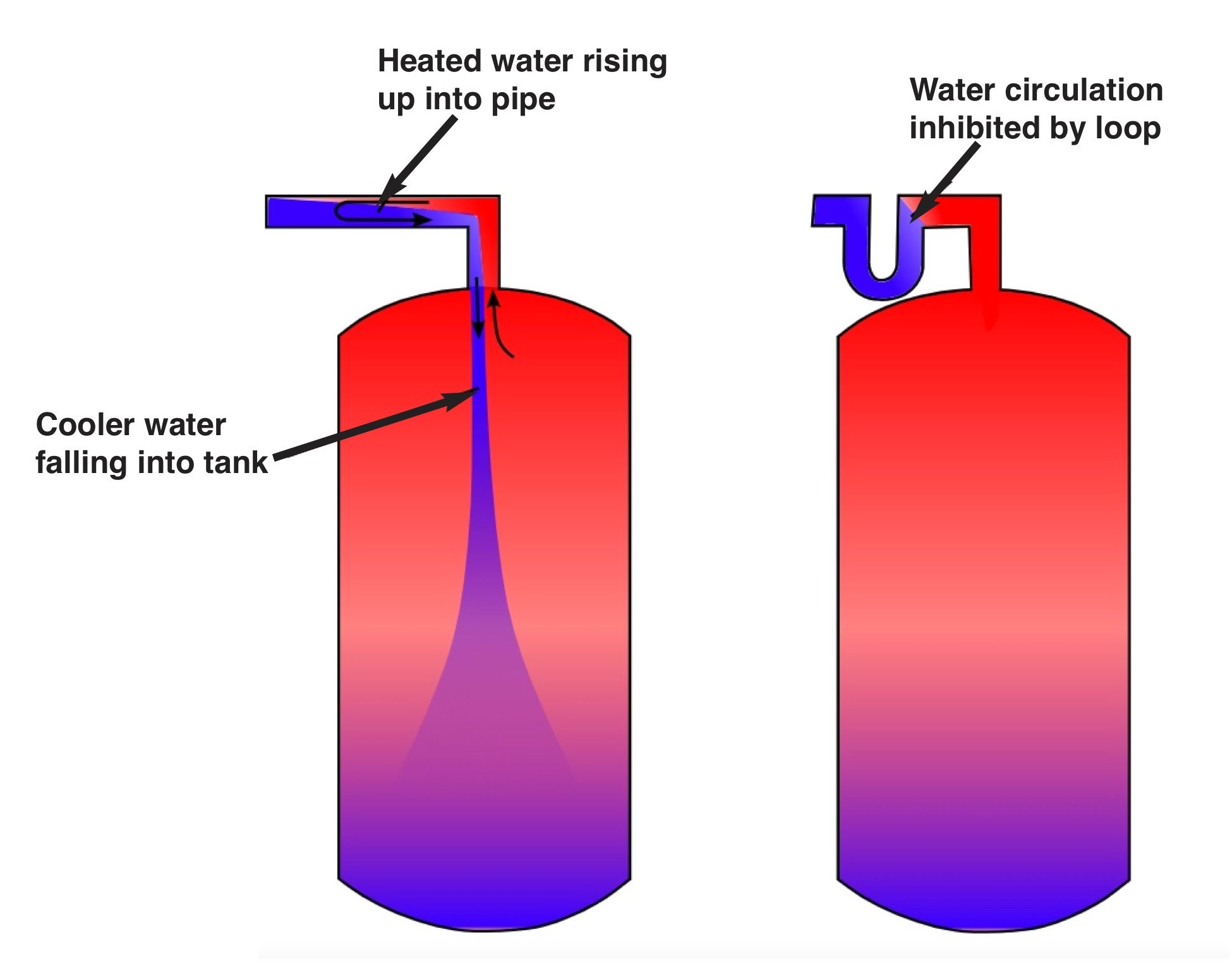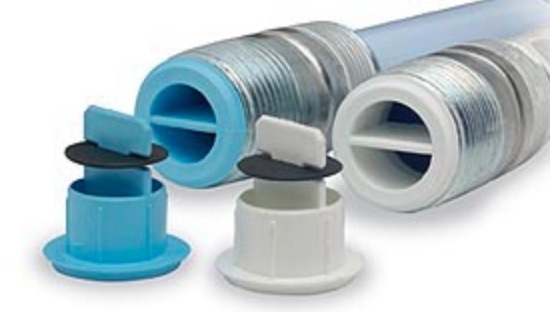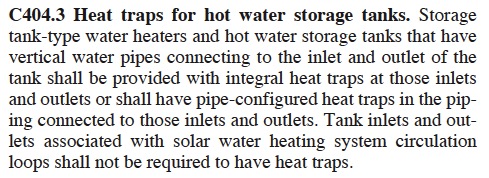How To Look At A House
McGarry and Madsen's home inspection blog for buyers of
site-built, mobile/manufactured and modular homes

What is a heat loop at a water heater?
Thursday, December 20, 2018
It is an old-fashioned, but effective, technique of adding a loop in the pipe above the hot and cold water connections to a water heater to avoid the flow of hot water out of the tank by convection. Hot water rises and cold water falls, as everybody knows. That can start a small circulation of water, called thermosiphoning, and the subsequent energy loss during standby periods. The loop can be upward or downward, and effectively traps the heat.
But a heat loop is just one type of heat trap, and it has been displaced by mechanical traps that are installed in the water heater tank at the pipe connection by most manufacturers today. Heat trap nipples can also be bought and retrofitted. The heat trap mechanism can be a ball, flap, or a flexible disc like the one shown below that is included in Bradford White water heaters.

A heat trap is required by the International Energy Conservation Code (IECC) for all tank-type water heaters, except ones that are part of a solar water heater system, because solar systems depend on thermosiphoning to operate.
By the way, although heat loops are fine at the hot and cold water connections to a water heater, a heat loop is unnecessary and actually forbidden by the building code at the Temperature and Pressure Relief (TPR) valve. The water heater shown at the top of this page has one loop too many (the center one), which will allow stagnant water to collect behind the loop after the TPR valve opens if the tank overheats.
• • • • • • • • • • • • • • • • • • • • • • • • • • • • • • • • •
Here’s links to a collection of more blog posts about WATER HEATERS:
• Are water heaters required to be raised off the floor?
• Can a Temperature and Pressure Relief (TPR or T&P) valve be mounted to discharge horizontally?
• Where are gas water heaters not allowed to be installed?
• Is the minimum size water heater inlet pipe 1/2" or 3/4" according to the building code?
• Can you use a light switch for a water heater disconnect?
• How can I tell if a water heater is HUD-approved for mobile/manufactured homes?
• Can you wire a 240-volt water heater with 120 volts?
• Is it alright to have a shut-off valve on both the hot and cold water pipes at a water heater?
• What is the minimum clearance to doors and windows for an outdoor tankless gas water heater?
• What is required clearance for access and working space in front of an electric water heater?
• Why is the water heater older than the house?
• Does a water heater need a shut-off valve?
• Why should a tankless water heater have an isolator/service valve kit installed?
• When was a gas water heater first required to be elevated 18 inches above a garage floor?
• What is the purpose of a thermostatic mixing valve above a water heater?
• Does a tankless gas water heater still work with no electricity during a power outage?
• Why do water heaters have a sacrificial anode?
• What is the difference between a manufactured/mobile home water heater and a regular water heater?
• Does a tankless water heater require a pressure relief valve?
• When is a water heater drain pan required?
Visit our WATER HEATERS page for other related blog posts on this subject, or go to the INDEX for a complete listing of all our articles.
Click Below
for Links
to Collections
of Blog Posts
by Subject
Top 5 results given instantly.
Click on magnifying glass
for all search results.
Search
This
Site